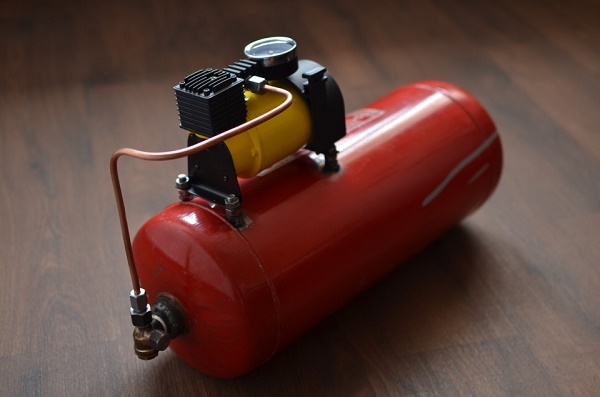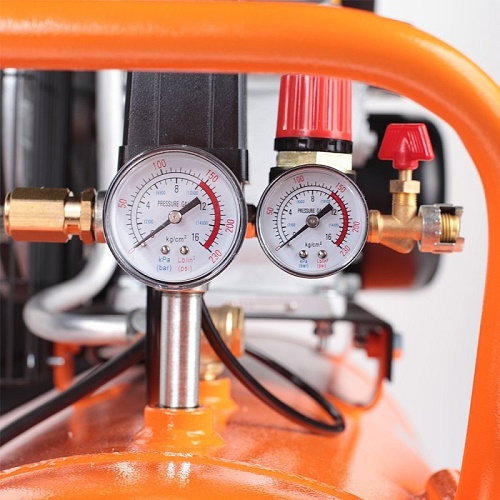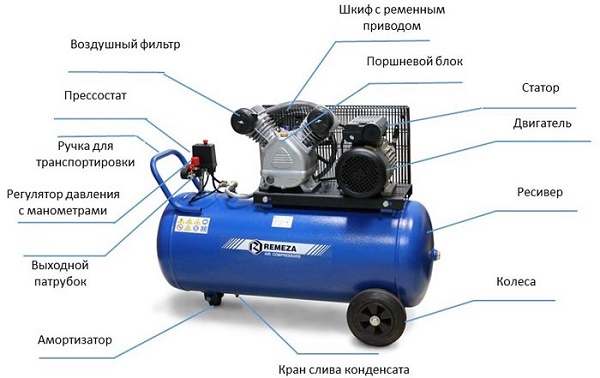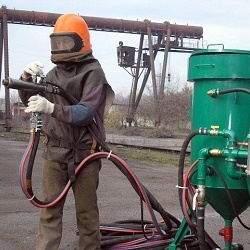How to choose a receiver for the compressor
Most of the compressor stations except the machine that compresses the gas to the required pressure, includes a metal tank, called the receiver. Often it is much larger than the associated equipment. In this article you will find an explanation of why you need a receiver for a compressor, and by what parameters it is selected for a particular installation.
Content
Purpose and design features of the receiver
The purpose of the air tank is directly related to the physical properties of compressed gases. The faster they lose pressure in the event of a flow, the smaller the volume occupied. The receiver is needed in the compressor to perform the following functions:
- creating the necessary air supply to supply the consumer without turning on the motor or when it stops unexpectedly;
- smoothing of pressure fluctuations, especially characteristic of piston machines;
- ensuring the convenience of regulating the output parameters of the gas outgoing from the compressor unit;
- reduce vibration, noise, peak loads;
- collection of moisture and small mechanical impurities contained in the gas.

Important! Often the use of large air collectors saves energy consumption due to the rational operation of the electric motor.
The tank for the compressor is traditionally made from corrosion resistant steels. It is allowed at small volumes and pressures to use also some types of plastic and high-strength rubber. Receivers for mobile installations can reach 100 liters. The dimensions of fixed equipment are not limited by anything and are often measured by several cubic meters.
To fill the cylinder and the flow of air from it is just one fitting, but models with a separate inlet and outlet of gas work better. In order to control pressure, some manufacturers additionally provide pressure gauge installation. For large tanks this requirement is mandatory. Hatches are welded in for their revision and cleaning.

The spatial location of the receiver, depending on the convenience of the layout of the equipment is selected horizontal or vertical. The first option gives greater stability to mobile units. The second provides better condensate separation and requires less installation space.
Receiver selection
Technical requirements for receivers of compressors are quite tough. As high-pressure equipment, they can be a source of potential danger.. The most important characteristics that determine the permitted parameters of the tank application are:
- operating pressure;
- temperature range;
- indicators of relative humidity.
The rules for the design and safe operation of vessels working under pressure regulate the volume, frequency and method of their control tests for density and strength. They must be sealed, without visible defects and signs of external or internal corrosion.

From a technological point of view, an air compressor with a receiver is needed to ensure the operation of certain pneumatic equipment. Here the necessary gas flow with the required pressure is important.This takes into account the mode of operation with probable peak loads. All these indicators determine minimum receiver volumeable to provide a steady flow of air.
How to choose a receiver to the compressor that is already available? Take advantage of special tables or calculation calculators.
On a note! Simplified techniques take as a basis the averaged experimental data. It is believed that the cylinder for the compressor can not be less than the volume of gas produced by them for 8 seconds of work at regular loads.
Alternative choice of capacitive equipment based on compressor power. It gives the simplest dependency:
- 5 kW - up to 100 liters;
- 10 kW - up to 300 l;
- 20 kW - up to 550 l.
All other values are obtained by interpolation.
Making and connecting an optional receiver with your own hands
Often, for a small workshop there is a need to accommodate new pneumatic equipment, with which the old air blower can no longer cope. You can try to solve this problem yourself if connect an additional receiver to the compressor. At the same time, it is not at all necessary to incur unjustified expenses when buying a standard capacity. Skilled craftsmen try to do with improvised means.
Practically in any economy the old equipment often intended to work under pressure often lies idle. The receiver for the compressor with your own hands can be made of a gas cylinder, a fire extinguisher or a piece of a seamless thick-walled pipe of large diameter.
The most reliable is a homemade receiver made from a cylinder for liquefied petroleum gas. For this purpose, the inlet valve is dismantled from it, after which the internal space is intensively washed or steamed. It is advisable to fill the container with water and let the bottom sediments dissolve in it during the day. Only then, if necessary, can the gas cutting and welding be carried out on the housing.
Weld in the cylinder fittings for connecting the pressure gauge, air inlet and outlet, a drain valve for condensate drainage.
The connection to the compressor is made using metal pipes or hoses designed for high pressure.The assembled installation must tested at maximum load, then select the optimal mode for different situations.

/rating_off.png)











